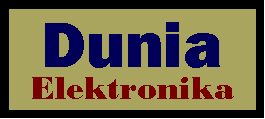What is Pay Per Click?
Pay per click (PPC) is an Internet advertising model used on search engines, advertising networks, and content websites, such as blogs, where advertisers only pay when a user actually clicks on an advertisement to visit the advertisers' website. With search engines, advertisers typically bid on keyword phrases relevant to their target market. When a user types a keyword query matching an advertiser's keyword list, or views a webpage with relevant content, the advertisements may be displayed. Such advertisements are called sponsored links or sponsored ads, and appear adjacent to or above the "natural" or organic results on search engine results pages, or anywhere a webmaster or blogger chooses on a content page. Content websites commonly charge a fixed price for a click rather than use a bidding mechanism.
Although many PPC providers exist, Google AdWords, Yahoo! Search Marketing, and Microsoft adCenter are the largest network operators as of 2007. Minimum prices per click, often referred to as costs per click (CPC), vary depending on the search engine and the level of competition for a particular phrase or keyword list—with some CPCs as low as US$0.01. Very popular search terms can cost much more on popular search engines. The PPC advertising model is open to abuse through click fraud, although Google and other search engines have implemented automated systems to guard against abusive clicks by competitors or corrupt webmasters.[1]
Categories
Pay per click campaigns can be categorized into two major categories: sponsored match (or keyword) and content match. Sponsored match campaigns involve the display of advertisements on search engine results pages, whereas content match campaigns involve the display of advertisements on publisher websites, newsletters, and e-mails.[2]
There are other types of pay per click programs that target product or service searches and product comparison sites. Search engine companies may participate in more than one category. PPC programs do not generate any revenue solely from Web traffic for websites that display the advertisements: Revenue is generated only when a user clicks on the advertisement itself.
Keyword-based PPC
Keyword-based pay per click advertisers bid on search terms—keywords consisting of words or phrases, and possibly product model numbers. When a user searches for a particular keyword, the list of advertiser links appears, where the ordering of those links is based on the amount bid for the given keyword. Keywords are the very heart of PPC advertising, and are guarded as highly-valued trade secrets by the advertisers. Many advertising firms offer software or services to help advertisers develop keyword strategies. Content Match, a service offered by Yahoo!, distributes the keyword ad to the search engine's partner sites and/or publishers that have distribution agreements with the search engine company.
As of 2007, the following are notable PPC keyword search engines:
Ask.com
Baidu
Google AdWords
LookSmart
Microsoft adCenter
MIVA
Yahoo! Search Marketing
Yandex
Product engines
Product engines (a.k.a. product comparison engines or price comparison engines) are search engines for products, and let advertisers provide "feeds" of their product databases. When a user searches for a product, links to advertisers are displayed for that particular product. More prominence is given to advertisers who pay more; however, the user can typically sort by price.
Some product engines such as Shopping.com use a pay per click model and have a defined rate card.[3] Other engines such as Google Product Search, part of Google Base (previously known as Froogle), do not charge for the listing, but still require an active product feed to function.[4]
The following are notable PPC product engines:
NexTag
PriceGrabber
Shopping.com
Shopzilla
Service engines
Service engines allow advertisers to provide feeds of their service databases. When a user searches for a service, links to advertisers are displayed for that particular service. More prominence is given to advertisers who pay more; however, the user can typically sort by price or other criteria. Some pay per click product engines have expanded into the service space, while other service engines operate in specific vertical markets.
The following are notable PPC service engines:
NexTag
SideStep
TripAdvisor
Pay per call
Pay-per-call is a business model for advertisement listings in search engines and directories that allows publishers to charge local advertisers on a per-telephone-call basis for each sales lead (i.e., call) the publishers generate. The term "pay per call" is sometimes confused with click-to-call, which along with call tracking, is a technology that enables the pay-per-call business model. Pay per call is not restricted only to local advertisers: Many of the pay per call search engines allow advertisers with a national presence to create advertisements with local telephone numbers. According to the Kelsey Group, the pay per call market is expected to reach US$3.7 billion by 2010.[5]
Pay per delivery
Pay per delivery is a variation on pay per click used in e-mail marketing. E-mail marketing campaigns are charged only on the basis of e-mails that are delivered successfully.
Pay per action
Pay per action (PPA) is a variation on pay per click adopted by many search engines. An advertiser pays a specified amount upon successful completion of some action (e.g., conversion, sales lead, or sale). PPA was a beta test for advertising distribution within the Google Content Network. However, Google announced in July 2008 that the program will be discontinued in August 2008.
History
In February 1998 Jeffrey Brewer of Goto.com, a 25-employee startup company (later Overture, now part of Yahoo!), presented a pay per click search engine proof-of-concept to the TED8 conference in California.[6] This presentation and the events that followed created the PPC advertising system. Credit for the concept of the PPC model is generally given to Idealab and Goto.com founder, Bill Gross.
Google started search engine advertising in December 1999. It was not until October 2000 before the AdWords system was introduced, allowing advertisers to create text ads for placement on the Google search engine. However, PPC was only introduced in 2002; until then, advertisements were charged at cost-per-thousand impressions. Yahoo! advertisements have always been PPC-based since their introduction in 1998.
For a more in-depth presentation of PPC's history, see Fain and Pedersen (2006).[7]
Use in "paid to surf" websites
Pay per click search engines enlist members, known as affiliates, to display webpages called portals, which display various keywords. PPC affiliates will advertise their portals to paid to read (PTR) websites, in the hopes that the PTR affiliates will click a keyword, and then click one of the results. The PPC affiliates receive a small commission for each search.
Owners of paid to surf websites may advertise their own search portals, sending more advertisements—and essentially more money—to their affiliates who click more keywords and search results. However, this process is frowned upon, as many consider these webmasters to be forcing their affiliates into committing click fraud, as the majority of the paid to surf website's revenue may come from the webmasters' PPC commissions.
ref:http://en.wikipedia.org/wiki/Pay_per_click

 Article
Article
















































~~Jangan Lupa Untuk KomenTar Disini....!! Untuk kemajUan Para Pencinta Blog di Indonesia~~..
Agar Lebih Menarik Gunakan Emticon2 yang Lutcu...
 :f
:f
 :D
:D
 :)
:)
 ;;)
;;)
 :x
:x
 :$
:$
 x(
x(
 :?
:?
 :@
:@
 :~
:~
 :|
:|
 :))
:))
 :(
:(
 :s
:s
 :((
:((
 :o
:o